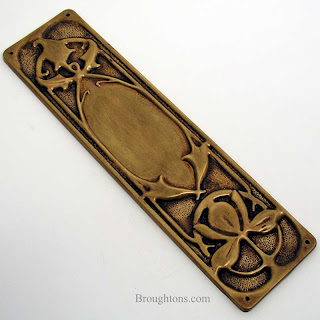
Time for another mini-series of posts! I thought it would be fun to share a few traditional decorating styles that lend themselves especially easily to being...Domythed? Domythicked? Domythized? ...Made more mythic. There we go. Unlike the contemporary and futuristic styles I mentioned on April Fool's Day, these styles seem to effortlessly blend with Domythic details to enhance the magic in your life. Are there other traditional decorating styles that also work? Of course! And of course it's also possible to make even the most contemporary of rooms Domythic.
We'll start with French Provincial decor. We've actually already featured a gorgeous example of a
Domythic home inspired by this design style. But here's some general information about it.
Thanks to
this blog post for info on the style:
The French provincial decorating style is a manifestation of the décor used in France’s provinces during the 17th and 18th century. Typically, people living in the provinces belonged to the lower classes and did not have too much money to spend on decorating their homes. So, they came up with a distinct style of their own which proved to be cost effective. The French provincial decorating style is based on the imperial designs used in courts and homes of the rich and wealthy. The only difference is that it doesn’t cost as much. Exempting expensive textiles, embroidery, costly furniture and a collection of gold items, the French provincial style does not lack in charm or appeal in any way. Here are the basics of this beautiful decoration style.
Furniture
Armoires are a staple of French provincial decoration. Back in the day, closets encompassed whole rooms and the tax laws stated that each household shall be taxed according to the number of rooms. Those who couldn’t afford to have closets chose wardrobes or armoires, as they are known. Armoires are carved cabinets used for storing things. With high quality metal work, armoires are flexible and can be used in every room in the house. Without armoires, a French provincial theme will be incomplete.
Wall Adornments
Like armoires for furnishing, the wall adornments used are also inexpensive. Generally, mirrors are hung on walls. Mirrors reflecting the light around the room are a trademark of French provincial decoration. You can get ornate and carved mirrors that have beautiful art work done on the frame. They will enhance the look and feel of your room substantially. You can choose between large and small mirrors but larger mirrors are preferable. Also, photographs in ornamental frames can add to the grandeur and feel.
Fabrics
Embroidery is widespread in French provincial decoration. Embroidery was a skill taught to each and every female during that time, which is why they were able to weave beautiful and intricate patterns. To reflect a poignant French provincial theme, you have to go for fabrics with heavy embroidery. All the pillows, curtains, drapes, bed sheets and linens you use should be embroidered. Along with embroidery, you can use fabrics with lace work, which were also common during the 17th and 18th century.
Colors
The colors used in French provincial decoration are inspired by the French countryside. Since the provincials didn’t have much money to buy colorful items from across the continent, they adapted what they could see around them. There are a variety of colors that you can use in your interior décor, such as cornflower blue, brick red, deep brown and sage green. Also, the colors of the French national flag, red, white and blue are found abundantly in French provincial decoration.
These are some of the basics of French provincial decorating. There is room for improvisation and improvement in this décor style and you can change it according to your preference. Make sure you keep the basics in mind while selecting all the elements of a great French provincial theme.






 Resource for all the above images
Resource for all the above imagesAlthough the description mentions a wide variety of colours, I find that French style usually is full of pale shades of colors and whites and creams.
A few photos I took of a magazine article:



























































